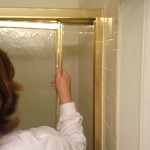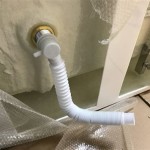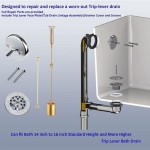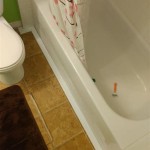How to Unclog Bathtub Pipes
A clogged bathtub drain can be a frustrating inconvenience, hindering your daily routine and potentially causing water damage. Fortunately, unclogging bathtub pipes is a task that can be tackled with a few simple methods and tools. By understanding the common causes of bathtub clogs and employing the right strategies, you can restore your drain to its proper function without the need for a professional plumber.
Identifying the Cause of the Clog
Before embarking on any unclogging efforts, it is essential to identify the likely cause of the blockage. This will guide your choice of cleaning methods and ensure you address the underlying issue effectively. Common culprits behind bathtub clogs include:
- Hair and Soap Scum: These are the most frequent culprits, accumulating over time and forming a sticky mass that obstructs the drain.
- Grease and Oils: From soap products, lotions, and even hair care products, grease and oils can solidify in the pipes, contributing to blockages.
- Foreign Objects: Toys, jewelry, or other small items can accidentally find their way into the drain, creating a physical obstruction.
- Mineral Buildup: In areas with hard water, mineral deposits like calcium and magnesium can form a hard crust within the pipes, narrowing the passageway and hindering water flow.
By assessing the potential causes of the clog, you can focus your cleaning efforts on the most likely culprits.
Basic Unclogging Techniques
For many bathtub clogs, simple techniques can effectively clear the obstruction. These methods are often successful for hair and soap scum accumulations, and they are generally safe for most pipes:
1. Plunger Power
A plunger is the go-to tool for many drain clogs. To use a plunger effectively:
- Prepare the Area: Ensure the drain is covered in water. This creates a seal for the plunger to work effectively.
- Position the Plunger: Place the plunger directly over the drain opening, ensuring a tight seal around the edges.
- Pump Up and Down: Push and pull the plunger up and down with a steady rhythm, applying firm pressure.
- Listen for Changes: As you pump, listen for any changes in resistance. A sudden release of pressure indicates that the clog is loosening.
- Repeat as Needed: If the clog persists, repeat the process for a few minutes.
Remember to maintain a tight seal throughout the process. If the plunger isn't creating a good seal, try placing a wet cloth around the edges of the drain opening to enhance the suction.
2. Boiling Water and Baking Soda
A simple and effective method for dissolving grease and soap scum is using boiling water and baking soda. Follow these steps:
- Pour Boiling Water: Carefully pour a pot of boiling water, gradually, down the drain. The heat helps loosen and melt the grease and soap scum.
- Add Baking Soda: Pour a cup of baking soda down the drain. Baking soda is a natural deodorizer and can help break down stubborn clogs.
- Flush with Hot Water: Run hot water down the drain for a few minutes to flush away the loosened debris.
- Repeat if Necessary: If the clog remains, repeat the process a few times.
It's important to note: never pour boiling water directly onto a plunger, as this could damage or melt the rubber.
Chemical Drain Cleaners: Use with Caution
Chemical drain cleaners are a powerful option for stubborn clogs. However, they should be used with caution as they can potentially damage pipes and pose health risks. If you decide to employ chemical drain cleaners, follow the manufacturer's instructions carefully and take necessary precautions:
- Read the Instructions: Always read the instructions carefully before using any drain cleaner. Pay attention to the recommended amount, contact time, and safety precautions.
- Protect Yourself: Wear gloves and eye protection when handling chemical drain cleaners.
- Ventilate the Area: Ensure proper ventilation by opening windows or using a fan.
- Avoid Mixing Chemicals: Never mix different drain cleaners or chemicals as this can result in dangerous reactions.
- Flush with Water: After allowing the cleaner to work according to the instructions, flush the drain with abundant cold water.
If the clog persists despite your efforts, it may be time to call a professional plumber. They have specialized tools and expertise to handle complex and stubborn clogs. Additionally, if you suspect a broken pipe or a more serious issue, contacting a plumber is always the best course of action.
Prevention is Key
Preventing bathtub clogs is an ongoing process that requires a few simple practices:
- Regular Cleaning: Periodically cleaning the drain with a drain snake or a mixture of baking soda and vinegar can help prevent clogs from forming.
- Hair Strainer: Use a hair strainer to catch hair and other debris before it reaches the drain.
- Reduce Grease and Oil: Minimize the amount of grease and oil going down the drain. This can be achieved by wiping down surfaces and rinsing dishes before washing them.
- Avoid Flushing Items: Never flush items like cotton balls, tissues, or wipes down the drain as these can easily cause clogs.

5 Easy Ways To Unclog Bathtub Drain

Top 5 Tips On How To Unclog A Bathtub Drain Smiley Cleaning

How To Unclog Bathtub Drain Pipes Save 200 In Two Minutes

How To Easily Unclog Bathtub Shower Drain In 5 Minutes Jonny Diy

How To Unclog A Bathtub Drain 11 Diy Clog Busters

How To Unclog A Bathtub Drain Without Chemicals

3 Simple Ways To Unclog A Bathtub Drain Naturally Wikihow

How To Unclog A Bathtub Drain 11 Diy Clog Busters

How To Unclog A Bathtub Drain Without Chemicals

How To Unclog A Bathtub Drain Without Chemicals Family Handyman
Related Posts








